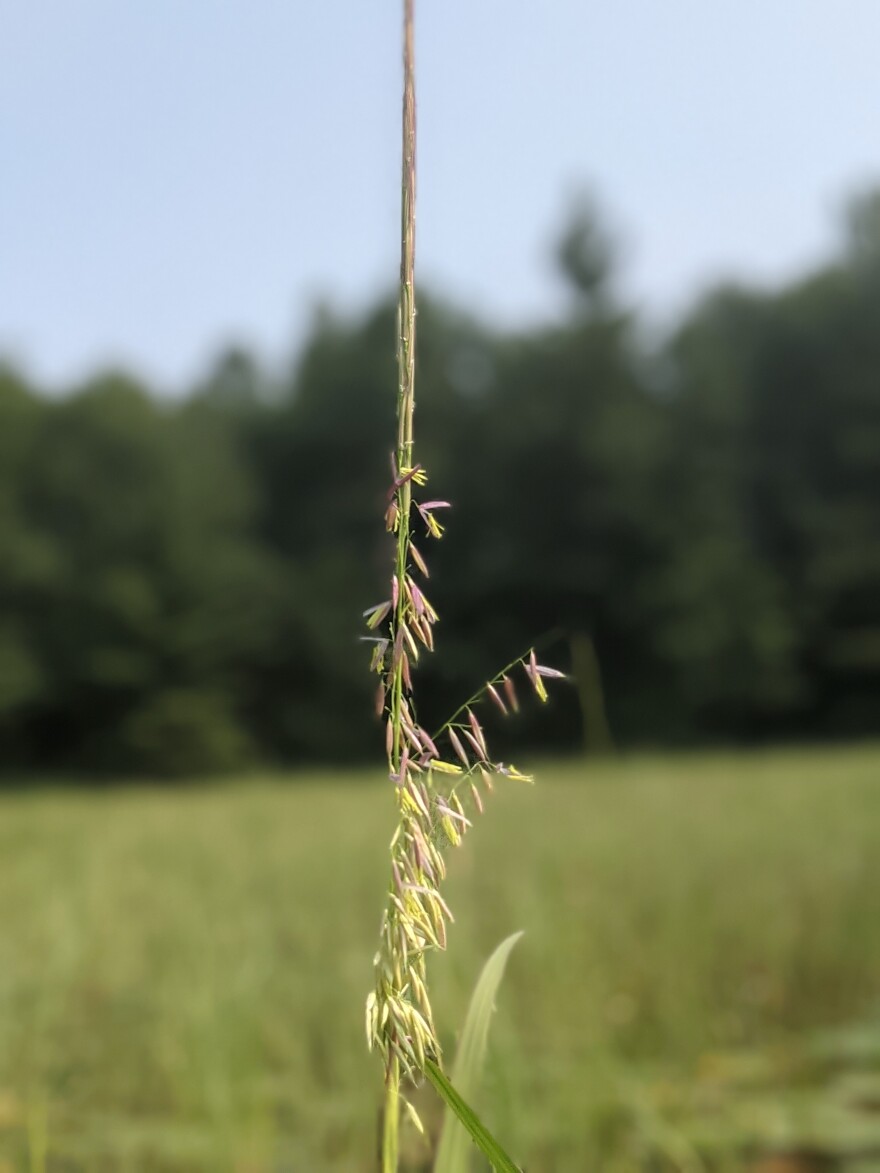In the Northwoods, one of our most iconic and beloved lake species is wild rice, a plant that grows in a few of our lakes and slow-moving streams. Last week, WXPR listeners heard from Joe Graveen from Lac du Flambeau, who talked about the importance of wild rice to the Ojibwe. It is also appreciated by non-Native people also love to harvest and eat wild rice. It is a finicky plant, preferring slow moving water with mucky bottoms and, because it is an annual plant, it must flower and produce seeds every year. A few weeks ago, WXPR listeners also heard from long-time wild rice researcher Peter David of the Great Lakes Fish and Wildlife Commission who reported that the 2021 rice crop is about the worst he has ever seen. And this follows 3-6 bad years leading up to the especially poor showing this year. My fellow Field Notes commentator and director at Trout Lake Station, Gretchen Gerrish and I started a research project last spring to study the wild rice and see if we could unravel some of the reasons for this decline.
The ice went out very early last spring, marking an early start to our field season. When we first visited the shallow water near the boat landing on Island Lake in Manitowish Waters, we quickly found a number of tiny pale green germinating wild rice seedlings, and we knew it was time to start tracking the rice was on its annual journey. We returned every two weeks, for the entire summer, not just on Island Lake, but also on five other wild rice lakes in Vilas County.
The six lakes we are studying are very different from each other with respect to the current and historic wild rice populations, water flow, other vegetation, and waterfowl populations. Two of our lakes have aquatic invasive species butting up against the wild rice, but at least in these two lakes, the two species seem to coexist peacefully. Some of the other lakes have good wild rice populations and others have poor.
One of the biggest takeaways is that we are contending with an idea you could call the Invisible Present. Whether you are thinking about the current number of muskies in your lake or the density of a stand of wild rice, the current state of things is due to a history of fortunate and unfortunate events. Something may have happened five years ago leading to the current situation, even though you can’t always figure out what went wrong or when.
With wild rice, we have seen about 5-6 years of unusually high water. Even if the water levels are not especially high this year, that legacy may have set the stage for our current poor rice performance. If last year’s rice crop was poor, where are the seeds to start this year’s population? And if the year before that was bad, there will be a rapidly diminishing supply of seeds to restart the population, even if lake conditions are great this year.
What contributes to a bad year for rice? As climate change rears its ugly head, it will likely lead to thinner ice and/or earlier ice off which could lead to better survival of pond lilies that compete with rice in the spring. Earlier ice off means a longer growing season for many competing perennial plants that grow and grow all summer – and the warmer and the longer the better for them. Wild rice, which as an annual plant follows a regimented sequence to ensure a full life cycle each year, may not be as flexible as other plants in taking advantage of a longer growing season.
Another change to our wild rice lakes is the increase in the number of waterfowl, and especially the geese and swans. Native trumpeter swans have made a stupendous comeback on our area and the WDNR now estimates their population in Wisconsin at about 6000. One of our lakes had two adults rearing two cygnets. Another lake had five adults. A third lake had a platoon of geese. The damage done by the swans and geese is conspicuous. Swans and geese do not wait for the rice to ripen and fall into the muck, as many ducks do. No, the swans and geese chew the leaves once they stick up out of the water and are a few inches tall. This makes it harder for the plant to grow big enough to flower and reproduce. In this case, what is good for the goose, is not good for the …well, the wild rice. We have a winter to review our data, rethink our questions, and plan for another field season.







